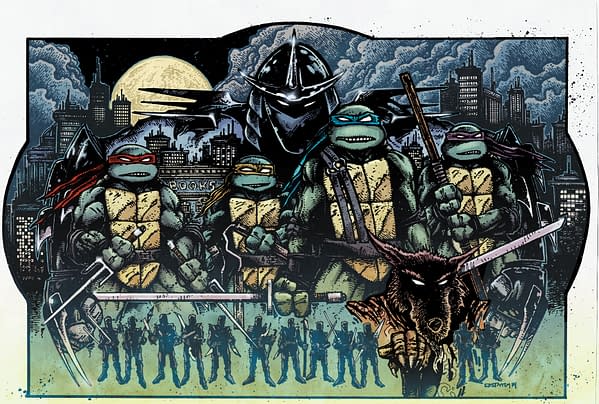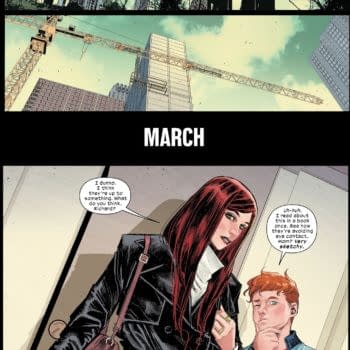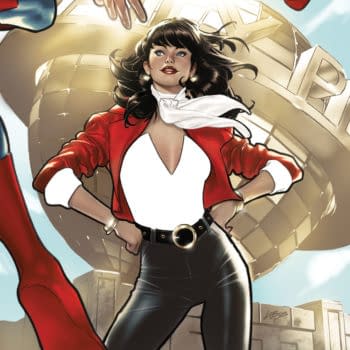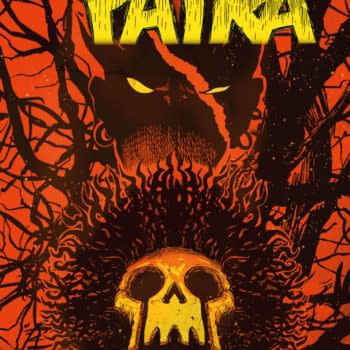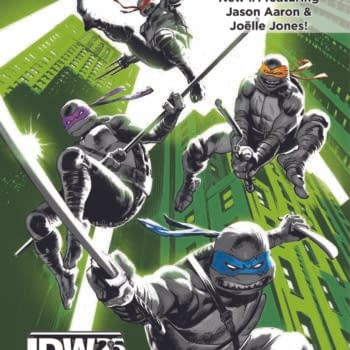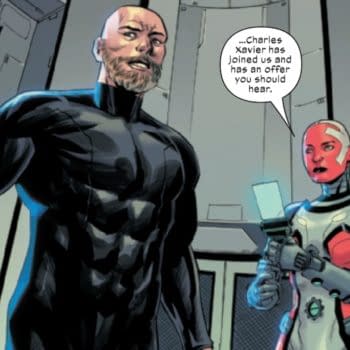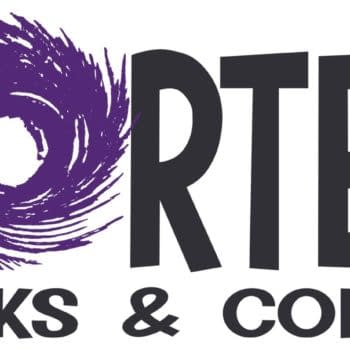Posted in: Comics, Recent Updates | Tagged: Comics, entertainment, heavy metal, idw, kevin eastman, Lost Angeles, Teenage Mutant Ninja Turles
Some Quality Time With Kevin Eastman At Amazing Arizona Con
By Alex Wilson

Eastman also has a large involvement in the realm of charity working on charity graphic novels such as Solestar and helping to promote the Hero Initiative.
I had a chance to sit down and talk with Eastman during Amazing Arizona Comic Con to discuss the influence of the turtles, his influences and history, along with upcoming projects.
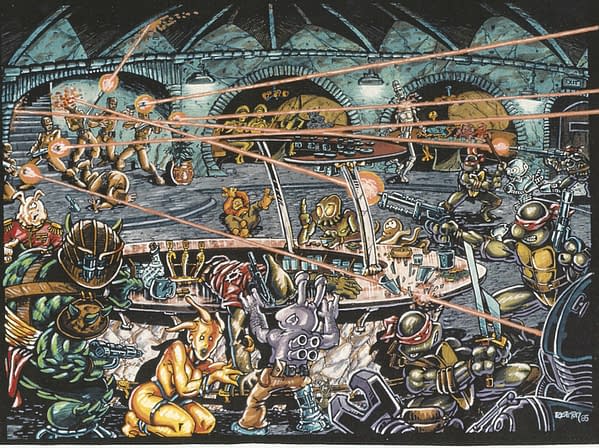
Kevin Eastman: It's still much of the same. I grew up as a huge fan of comic books. Anything by Jack Kirby I was a huge fan of. He was one of my favorite, all time. The first movie I ever saw in theaters, I grew up in a very small town in Maine, was Planet of the Apes and it blew my mind. So it's always been feeding on pop culture, whether it be music or video games or mostly comic books. Even today I try to find time to run around a show and pick different comic books or I watch a lot of movies and that kind of stuff. It's the same kind of stuff, whether it be Walking Dead or going to see Captain America or The Avengers or pop culture stuff. I love it. I still feed off that energy.
AW: With each incarnation of the Turtles in movies and TV and other forms, what have you taken away?
KE: The first version of the Turtles was the cartoon that came out in 1988. The comic book was edgier and black and white. Peter [Laird] and I wrote it for ourselves so when we worked on the first version of the Turtles we had full control, full say, and full approval over everything but we knew it was being geared towards a much younger audience so there were some things that we had to change like the Foot soldiers and the robots so you could actually have the Turtles hack them up on the TV screen and we softened up some of the origin story.
In each version there's been a little tweak here and a little nudge there but we still always try to keep the heart and soul of the characters or the humor or the action or what made the characters attractive to fans who bought them in the first place. We did the IDW series… we changed some of the origin bits but there were still true to the Turtles. The new movie, there were changes made to it, some physical, some origin wise, but it was still true to the heart of the characters and that's something we hope to keep there. Personally I love all the different version. I think it's neat to see what other people want to take them.
AW: What's it like watching other writers take on something you created?
KE: It's fantastic actually. I guess I look at it this way. When I was growing up, reading comic books, there were always different art teams on some of your favorite characters. Daredevil for example, I started reading it when Jean Cullen was drawing it and Bob Brown and then different artists would come in. I still remember clearly when they introduced a new penciler, Frank Miller. Then we watched what he did over the next 30 issues. There were always different art times on Ironman or Avengers and whatever. Pete and I did the first 15 issues together and that really set the whole foundation of what really became the Turtle universe and it was always interesting when other writers would approach us with an idea, the things they saw in our characters.
We hadn't developed them far enough to go all that deep. We always made sure the story stayed true to the heart of the characters but we loved those deviations. It really broadened our story of ideas for additional issues of the turtles or the TV shows. What's been interesting, especially with the IDW series, Tom Waltz is a fantastic writer. He said when he was molding what he wanted to be the new foundation to the new turtle history, the new turtle universe, he got to pull from the TV shows, the black and white comic books, some of the role playing games, some of the animated stuff, the movies, pull characters and use them as a platform for new stories.
AW: Are they called the Foot because they kick ass?
KE: They're called the Foot because I was a huge fan of Daredevil and Frank Miller had introduced these ninja assassins called the hand, so we have the foot. The first issue, we have a lot of parody. Even Daredevil's mentor was Stick… Splinter.
AW: What modern books are you reading and getting into?
KE: I have weird tastes and I still run Heavy Metal Magazine so a lot of the stuff I like to read is all the submissions for Heavy Metal. I end up gravitating towards a lot European comics.
I still buy Daredevil. What Mark Waid is doing is still smoking. A lot of times I'll go into a local comic shop and find something and buy it because of the art, not because I have to follow every single issue. Before Watchmen, I really enjoyed that series.
I'm doing a new 6 issue series for IDW, Lost Angeles, that I wrote about 8 years ago with Simon Bisley and I'm going to be writing and drawing that. I'll probably do another 4 issue turtle series this year and another 12 issue series that I pitched to IDW.
AW: What's Lost Angeles about?
KE: Growing up as a geek and big fan of The Warriors. It's basically The Warriors set in LA after an apocalypse. There's a Romeo and Juliet sort of thing. There's a lot of action. There's a lot of gangs. It takes place ten years after this big catastrophic event and it all takes place in Los Angeles.
Our main gang is located around Hollywood and Highland. They fight from the Staples Center, this new Aztec-ian empire that's built up around the Staples center and they fight from the Staples Center all the way to Venice beach.


